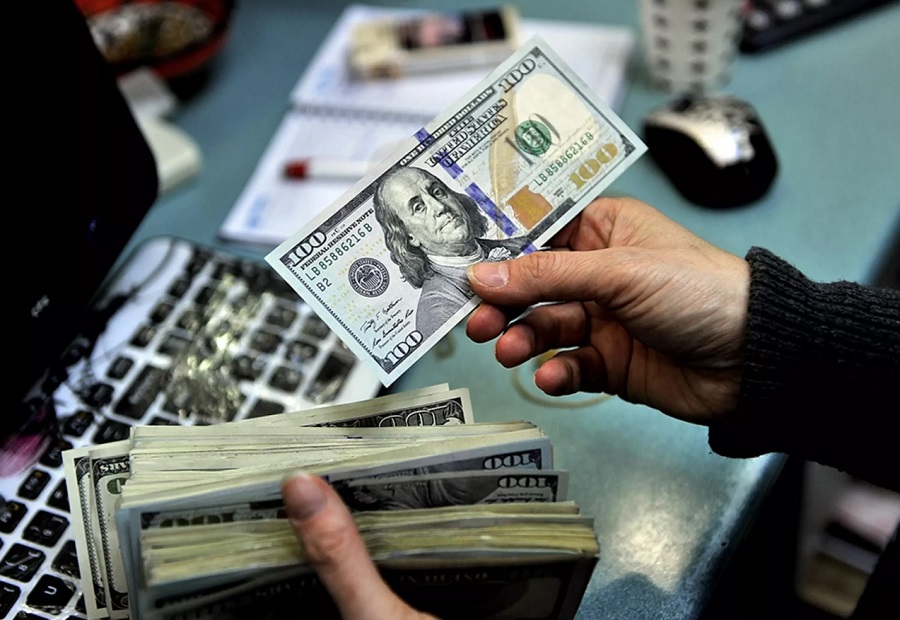Was the US dollar overvalued?
The IMF released its latest External Sector Report this week for 2022 and, once again, concluded that the dollar was overvalued.

The IMF puts the dollar’s overvaluation in real effective terms at around 9% in 2022 which is not dissimilar to its calculations for dollar overvaluation in prior years.
>> Another angle on de-dollarisation
It adds to other valuation measures that suggest the dollar is too strong relative to some fundamental measure, such as inflation or current accounts. But is this helpful when it comes to trying to determine where the dollar might go over the long haul?
The IMF puts the dollar’s overvaluation in real effective terms at around 9% in 2022 which is not dissimilar to its calculations for dollar overvaluation in prior years. It seems, therefore that traders and investors have not paid too much attention to the fact that the dollar has been overvalued for some time and pushed the dollar down. Last year the dollar rose by over 8% despite the drop late in the year.
We’d argue that there are periods of time when temporary over or undervaluation are justified. In 2022, overvaluation of the US dollar seemed justified by the fact that the US’s terms of trade improved significantly compared to countries such as Japan and those in the euro zone. This, in turn, was caused by the surge in energy prices and the fact that the likes of the euro zone and Japan have to import their energy needs, unlike the US which is basically self-sufficient. But now, as energy prices, particularly gas, have fallen back, the overvaluation of the dollar is perhaps harder to justify.
The key question is whether this overvaluation should play a part in longer-term forecasts for the US dollar. If we look at predictions from other institutions it seems hard to suggest that it does. For instance, the Bloomberg survey of analysts shows a long-term forecast median of 1.16 for euro/dollar in 2026 with a range of 1.10 to 1.22. For sterling the median forecast is 1.26 with a range of 1.20 to 1.36.
These median forecasts often tend to be fairly flat and close to current spot rates over short-term horizons as the bulls and bears usually cancel each other out. But with long-term forecasts out a few years we might expect that, if valuation is a factor driving predictions, then there should be more notable weakness in forecasts for the dollar.
The fact that there is not probably shows that there is some scepticism in using valuation, however measured, as a currency guide. While we can understand this, we do still feel that measures of under or overvaluation can be a useful yardstick to project currencies. Hence, it is not too surprising that our forecasts for the euro three years out are much higher than the Bloomberg consensus at 1.36, and also for sterling/dollar at 1.52.
>> Will the US dollar move by the end of the FED’s tightening cycle?
This being said, weak forecasts for the US dollar relative to the consensus are certainly not just a result of valuation. But where valuation interacts with other fundamentals is important. For instance, take the issue of de-dollarisation; something that has become a hot topic. We can’t say for sure that there will be a significant move away from the use of the dollar in areas such as trade invoicing, currency lending, reserve holding etc. But what we do believe is that the greenback could be particularly sensitive to any such developments the more it is overvalued. For, in some senses this overvaluation is one of the benefits of having the dominant global currency.
In effect, the US can run larger current account deficits and budget deficits than other countries can, without succumbing to currency weakness, because overseas residents have a faith in the US and the dollar, or at least faith in its liquidity. But should that faith recede, recede through de-dollarisation then it seems reasonable that so too will the extent of dollar overvaluation that the US can hope to enjoy.
According to the Standard Bank, another issue is the cyclical trend in the US dollar whereby we tend to observe years of weakness, and perhaps undervaluation, followed by years of strength and overvaluation, and so it goes on. This last upcycle has been in place a long time, since 2011. Just because the US dollar has gone up for some time does not automatically mean it will fall for some time. But that is the view of this bank. In sum, the Standard Bank feels that the balance of risks suggests a lower dollar over the long haul and the currency’s overvaluation is just one of these threats.








